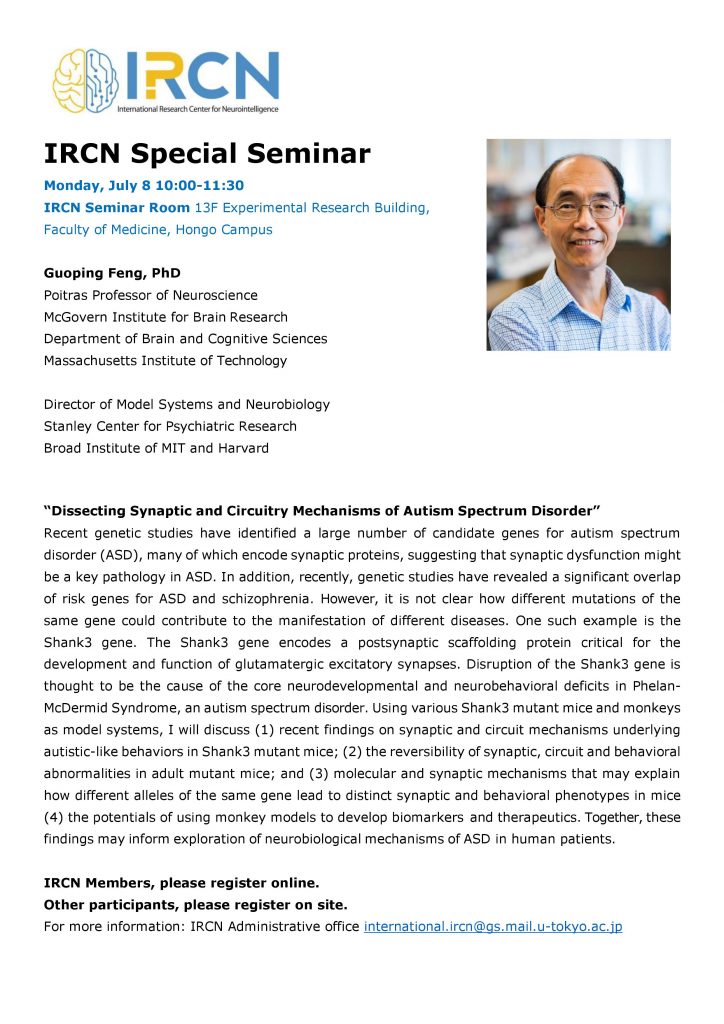Date: July 8, 2019 10:00-11:30
Venue: IRCN Seminar Room@13F, Faculty of Medicine Experimental Research Building, School of Medicine, Hongo Campus
Speaker: Guoping Feng
Poitras Professor of Neuroscience
McGovern Institute for Brain Research
Department of Brain and Cognitive Sciences
Massachusetts Institute of Technology
Director of Model Systems and Neurobiology
Stanley Center for Psychiatric Research
Broad Institute of MIT and Harvard
For more information: IRCN Administrative Office international.ircn@gs.mail.u-tokyo.ac.jp
*Please contact us if you are interested in this seminar.
Abstract:
Recent genetic studies have identified a large number of candidate genes for autism spectrum disorder (ASD), many of which encode synaptic proteins, suggesting that synaptic dysfunction might be a key pathology in ASD. In addition, recently, genetic studies have revealed a significant overlap of risk genes for ASD and schizophrenia. However, it is not clear how different mutations of the same gene could contribute to the manifestation of different diseases. One such example is the Shank3 gene. The Shank3 gene encodes a postsynaptic scaffolding protein critical for the development and function of glutamatergic excitatory synapses. Disruption of the Shank3 gene is thought to be the cause of the core neurodevelopmental and neurobehavioral deficits in Phelan- McDermid Syndrome, an autism spectrum disorder. Using various Shank3 mutant mice and monkeys as model systems, I will discuss (1) recent findings on synaptic and circuit mechanisms underlying autistic-like behaviors in Shank3 mutant mice; (2) the reversibility of synaptic, circuit and behavioral abnormalities in adult mutant mice; and (3) molecular and synaptic mechanisms that may explain how different alleles of the same gene lead to distinct synaptic and behavioral phenotypes in mice (4) the potentials of using monkey models to develop biomarkers and therapeutics. Together, these findings may inform exploration of neurobiological mechanisms of ASD in human patients.
Details are below or click here(PDF).



